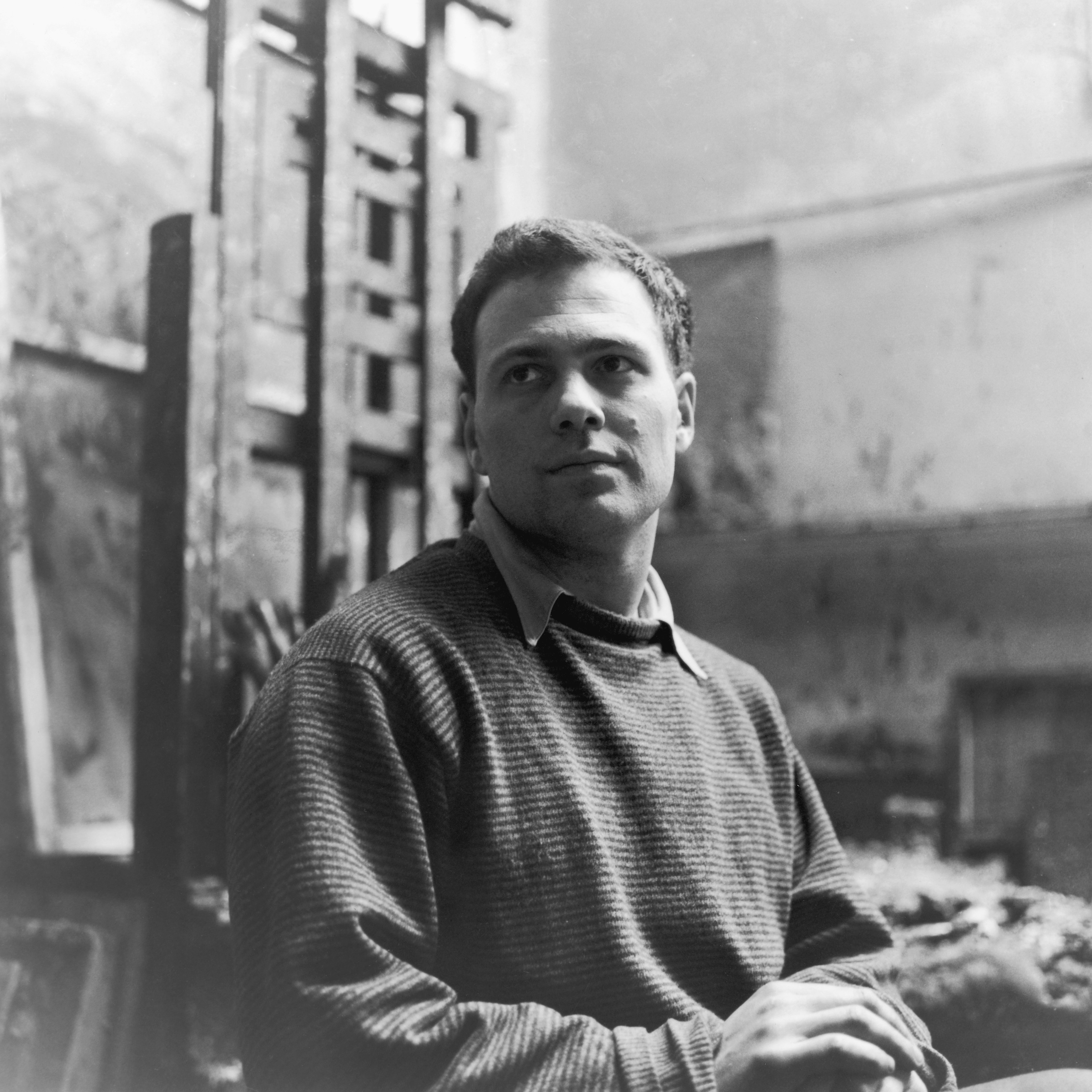The Berlin-born painter Frank Auerbach died at his home in London yesterday, November 11 at the age of 93. His death was confirmed by Frankie Rossi Art Projects in London.
“We have lost a dear friend and remarkable artist but take comfort knowing his voice will resonate for generations to come,” said Geoffrey Parton, director of the gallery and the artist’s friend and portrait subject.
Auerbach, who was Jewish, was spirited away from Germany to the United Kingdom as a child to escape the Nazi death camps, where both of his parents were killed in 1942. It was in north London that he made his home and kept the same studio for more than half a century, which shaped him and gave him much of his subject matter. Unlike his friend Lucian Freud, he was a deeply private man, although his subjects would sometimes report that he possessed histrionic tendencies which tended to come to the fore during extended sittings for portraits in the studio. He would often become extremely agitated in his movements, almost dancing around his sitter, and exclaiming aloud as he worked — “Yes! No!” — as if the fight to realize some elusive inner version would be a life-long battle.
Some of his earliest great paintings were made in the 1950s. He was very poor, and colors were gorgeous forbidden fruits, tantalizingly beyond his reach. Auerbach’s subject matter, then and for much of his life, was melancholic, consisting at this early point in his career of evocations of the ruins of the buildings of central London — department stores in Oxford Street, for example, laid waste by repeated waves of German bombs courtesy of the Luftwaffe.
The range of his palette was tonally very narrow, principally composed of wet earth, black, and gray or a sour, clayey brown. His paintings, then and later, were characterized if not defined by heavy texturing, as if gouged into shape and then scored into by fingers or even a spade — woundings, rawnesses, stuff lumpishly heaved and slopped. These shell-like ruins seemed to bear the pains of their hard factor. There is only this scabby, mucky remnant of the once great days of elegant street-posturing that their appearance seems to be suggesting.
There is nothing pretty or elegant about the work of Auerbach, and certainly no evidence of frivolousness. Like his friend and Saint Martin’s School of Art peer Leon Kossoff, he often chose to paint on board, whose hard surface is unyielding and unbending. It resists, and holds steady, in the teeth of excessive attack. A great sense of excessive fragility was the hallmark of many of his most characteristic portraits, too: They rise in front of us like skeletal ghosts of themselves, scaffolding stripped bare of its skin, their humanity almost withdrawn into a strange half-light. The scarification of Marsyas as painted by Titian comes to mind. It was as if Auerbach, life-long, was in the throes of striving to shuck off a burden almost too great to bear, one of which he would never quite be rid — the survivor’s burden, perhaps.
For all that, he was also able to paint those life-affirming scenes of the streets of north London neighborhood so familiar to him: the hustle and bustle of Mornington Crescent, for example. Life on the move, and forever going somewhere urgent.
Auerbach had his first retrospective exhibition at the Hayward Gallery in London in 1978 and received the Golden Lion, the Venice Biennale’s top prize, in 1986. The artist’s large-scale early drawings were the subject of Frank Auerbach: The Charcoal Heads at the Courtauld Gallery this year and his self-portraits were exhibited at Frankie Rossi Art Projects in 2023. Auerbach is survived by his son, the filmmaker Jacob Auerbach.

